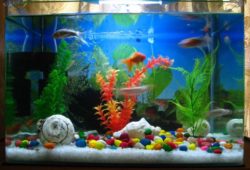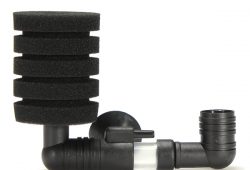Selecting the Form of Your Aquarium
In the article it is spoken about Selecting the Form of Your Aquarium. When buying an aquarium for either a freshwater or marine setting, you have got many selections to make concerning filtration, heating, lighting, substrate, and after all the fish and alternative aquatic life you want to stock your tank with. But, even the form of your tank will have an effect on your eventual aquarium surroundings, not solely in overall visual impact but in the quality of lifetime of your fish.

Most typical aquarium tanks are rectangular (for larger tanks) or bowl-shaped (for tiny tanks). However, tanks nowadays return in a wide range of shapes, as well as bow-front, corner bow-front, cylinder and 0.5-cylinder, hexagon and pentagon, cube, bullet, and varied specialty shapes. Whereas rectangular, bow-front, and cube tanks can be made of glass plus acrylic, other shapes like cylinders are sometimes made of acrylic by custom manufacturers.
Glass is troublesome to scratch, but a sharp impact might crack or perhaps shatter glass. Acrylic, on the other hand, will scratch easily, but is additional tough to crack or shatter. Glass maintains its clarity but refracts light-weight and thus distorts images and colours; acrylic is less refractive, but might yellow with age, so losing clarity. Glass is denser and heavier, and supports its own weight; acrylic needs a stand that can support the complete bottom surface of the tank. And acrylic is on the market in a wider variety of shapes. Keep these differences in mind when choosing between glass and acrylic — and whether or not glass tanks are available in the form you prefer.
Consider how abundant cubic volume you need for every fish you propose to purchase. Any tank you purchase ought to state the amount of water it will contain; in fact, with a rectangular or cubic tank, it’s simple to calculate this yourself. For little, freshwater fish, you’ll would like at least 1 gallon of water for each inch of fish (measuring the fish lengthwise). Marine fish require more. Therefore irrespective of the form of your tank, ensure that you just’re providing enough water to sustain your fish population.
Different tank shapes have different footprints — the footprint being the world of the underside of the tank. The footprint defines the horizontal living house of your fish, and a few fish would like more of it. Cichlids, as an example, need more area to determine territory, in rocks and different features you install in your tank. You shouldn’t crowd them.
The peak of a tank — the vertical house — additionally varies from tank to tank. Typically, tanks with a lot of vertical house have smaller footprints; i.e., they’re not as long or wide. While this may produce a dramatic visual result, your fish will not have as a lot of space to swim. Particularly if your tank is narrow — if there’s very little house from front to back — your fish can be forced to swim back and forth in straight lines, with very little room to dart about and build broad turns. Some wall-mounted tanks are notably narrow. All fish would like to swim, some more than others; if you limit their area, whether or not lengthwise or depthwise, your fish can be sad and even unhealthy. One exception is angelfish: because of their size and swimming patterns, angelfish do well in tall, narrow tanks.
Tall tanks are also detrimental to plant life in your tank substrate; it’s harder for light to penetrate to the increased depth, and your plants may suffer. If you’ve got a tall tank, build certain your substrate plants don’t would like a ton of sunshine, or provide further tank lighting.
And confirm your surface space — the area at the high of your tank, at the water’s surface. For many tanks, the surface space will be admire the footprint, except for odd-formed tanks, that may not be the case. The surface of your tank is where gas exchange happens: carbon dioxide is released from the water in exchange for oxygen. This process is facilitated after you add an air stone to your tank, when you put in filters and powerheads, and normally once you create surface agitation. Fish need well-oxygenated water, and a minimized surface area will hinder this process. If you have only some fish, this may not be a drawback, but for larger fish populations, guarantee that you’ve got adequate surface area.
There are more practical concerns when selecting the form of your aquarium tank. Deep tanks — tanks with larger height — will be more durable to clean. Assume regarding how straightforward it can be to succeed in your arm right down to the bottom of your tank, for cleaning or redecorating. This may seem like a minor concern, however over time an inaccessible tank might prove to be a significant annoyance. What sort of accessible house do you have for your tank — does one already understand where you’re going to place it? Depending on what kind of aquatic atmosphere you would like to create, your space might not be adequate; be prepared to get a new stand if required.
And how simple will it be to view your fish? As mentioned above, glass tends to be additional refractive, and distorting, than acrylic. Odd shapes can additionally be distorting — bow fronts, hexagons, pentagons, and cylinders could look stunning at first, however viewing from sure angles can produce distortions that don’t occur with flat-walled rectangular tanks. If viewing your fish while not distortion is vital to you, then a flat-walled tank is most suitable.
If you bear these points in mind, you will purchase the tank shape that’s most appropriate for your purposes.



